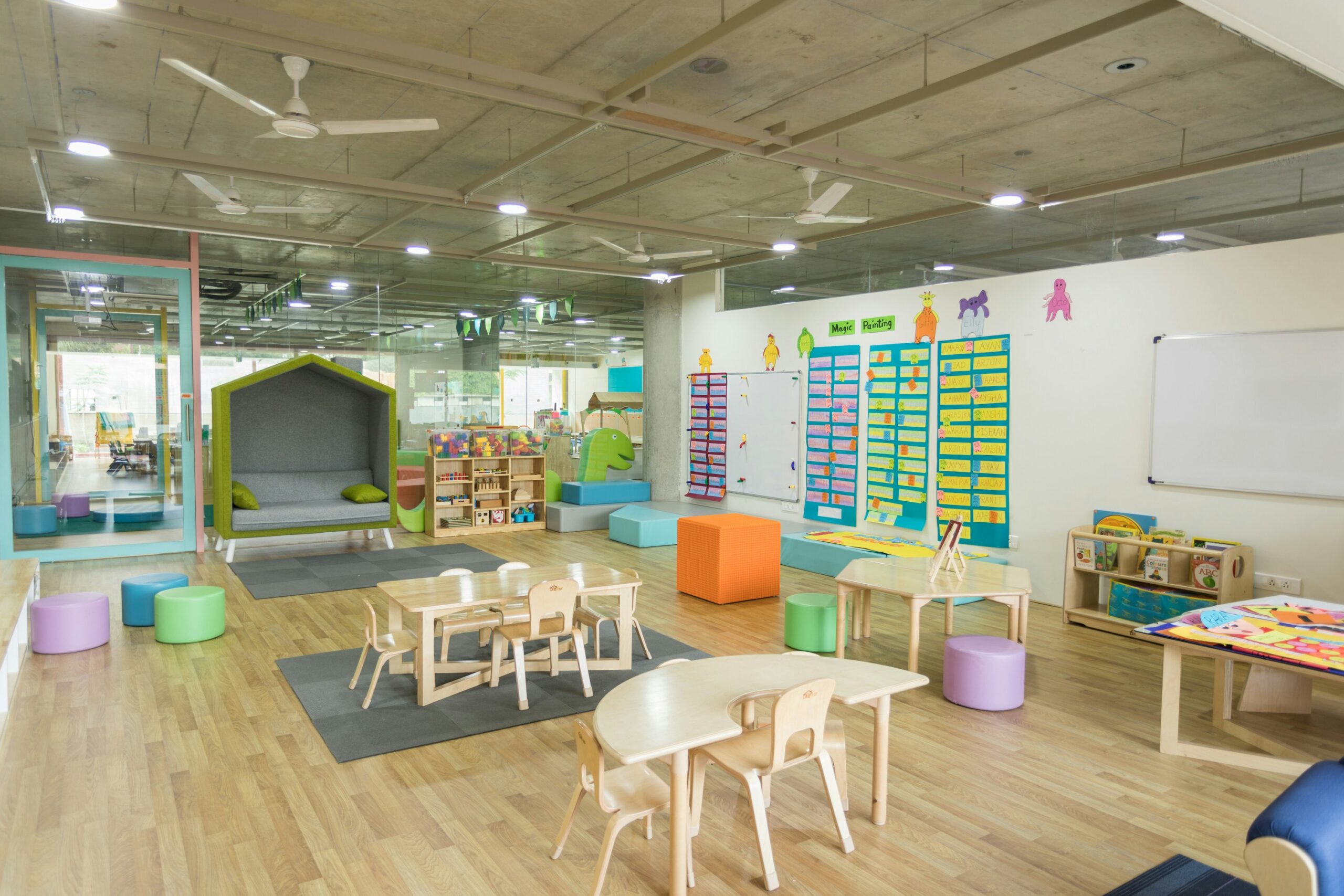Starting nursery is a significant milestone for both children and parents. While it marks an exciting new chapter of growth and learning, it can also feel like your little one is living in two separate worlds. The key to helping your child thrive lies in creating meaningful bridges between home and nursery life, ensuring both environments work together to support your child’s development, happiness, and sense of security.
Building Strong Communication and Partnership
The foundation of a successful home-nursery relationship begins with open and regular communication with your child’s key workers and nursery staff. This isn’t just about the daily handover conversations, though these are important too.
Make time for meaningful check-ins beyond the busy pickup and drop-off moments. Share observations about your child’s interests, new developments, or changes in behaviour you’ve noticed at home. If your toddler has suddenly become fascinated with dinosaurs or is going through a challenging phase with bedtime, let the nursery team know. This information helps them understand your child better and respond appropriately to their needs throughout the day.
Be open about family circumstances that might affect your child. Whether it’s a new baby on the way, a house move, or even something as simple as a disrupted weekend routine, these details help nursery staff provide extra support when needed. Remember, you’re partners in your child’s care, and the more information you share, the better they can support your little one.
Create two-way communication channels where you actively seek feedback from staff about your child’s day, friendships, and development. Ask specific questions: “How did she handle the transition from free play to circle time today?” or “Has he been showing interest in any particular activities this week?”
Consistency in Routines and Expectations
Children thrive on predictability, and maintaining consistent approaches between home and nursery helps them feel secure and understand what’s expected of them.
Align daily schedules where practical.
While you don’t need to replicate nursery life exactly at home, try to maintain similar meal times, nap schedules, and bedtime routines. If nursery lunch is at 12:00 PM, having weekend family meals around the same time helps maintain your child’s natural rhythm.
Use similar approaches to boundaries and behaviour management.
Discuss with nursery staff how they handle challenging behaviours and try to adopt compatible strategies at home. If the nursery uses positive reinforcement and natural consequences, incorporating these approaches at home creates consistency in your child’s learning about appropriate behaviour.
Maintain consistent expectations around independence skills.
If your child is learning to put on their own coat at nursery, encourage this same independence at home. Support the same self-care tasks, tidying up routines, and social skills like saying “please” and “thank you” that they’re practising in their nursery environment.
I spoke to Philip Ford from Hopscotch’s Hove Nursery, who said, “Children are incredibly perceptive about inconsistencies between home and nursery expectations. When we work with parents to align our approaches—whether it’s how we handle tantrums or encourage independence, children feel more secure because they know what’s expected of them. This consistency gives them more confidence to explore and learn.”
Supporting Learning at Home
Your home can become a natural extension of your child’s nursery learning experiences, reinforcing concepts and skills in fun, meaningful ways.
Ask about current themes and activities happening at nursery.
If they’re exploring minibeasts this week, you might go on a garden bug hunt together or read books about insects at bedtime. When they’re learning about shapes, you can spot triangles and circles during your daily walk or while preparing dinner together.
Extend learning through everyday activities.
Nursery math concepts can be reinforced while cooking together, such as counting ingredients, measuring water, or sorting cutlery. If they’re working on letter recognition, spot letters on shop signs or in favourite story books. This doesn’t need to feel like formal learning; it’s about making connections between what they’re discovering at nursery and the world around them.
Create learning opportunities that complement nursery experiences without duplicating them.
If a nursery is focusing on structured craft activities, you might emphasise messy play and sensory exploration at home, or vice versa. This gives your child a richer, more varied learning experience overall.
Emotional Support and Transition Strategies
Helping your child navigate the emotional aspects of spending time in different environments is crucial for their well-being and confidence.
Create predictable goodbye and reunion routines that help your child anticipate and manage transitions.
This might be a special goodbye hug, a wave from the window, or a consistent phrase like “I’ll be back after snack time and story time.” Similarly, establish reunion rituals that reconnect you both and help them transition back to home mode.
Process the day together through conversation.
Ask open-ended questions about their nursery experiences: “What made you smile today?” or “Tell me about something new you tried.” Listen for both positive experiences and any concerns, and validate their feelings about being away from home or missing you during the day.
Use comfort strategies that work across both environments.
A small family photo in their bag, a favourite small toy, or even a spritz of your perfume on their comforter can provide an emotional connection throughout the day. Discuss with nursery staff what comfort items and strategies work best for your child.
Acknowledge difficult emotions without trying to fix them immediately.
It’s normal for children to occasionally feel sad about goodbyes or frustrated when routines change. Helping them name these feelings and reassuring them that it’s okay to feel this way builds emotional intelligence and resilience.
Sharing Your Child’s Home Life
Your child’s identity is shaped by their home culture, family traditions, and unique interests. Sharing these aspects with the nursery helps staff understand and celebrate who your child is beyond their nursery hours.
Bring elements of your family culture into the nursery setting
Share photos of family celebrations, traditional foods you enjoy together, or languages spoken at home. Many nurseries welcome families sharing their cultural backgrounds during special events or circle time discussions.
Communicate your child’s current interests and passions.
If your three-year-old is obsessed with fire engines or loves helping with gardening, let staff know. They can incorporate these interests into activities and conversations, making nursery feel more personally relevant and engaging for your child.
Embrace new experiences your child discovers at nursery and bring them home.
If they’ve tried a new fruit at nursery and loved it, add it to your shopping list. If they’ve learned a new song or game, ask them to teach it to the family. This shows you value their nursery experiences and helps integrate both parts of their world.
Practical Collaboration for Development
Working together on your child’s developmental goals creates a unified approach that accelerates progress and builds confidence.
Coordinate on developmental priorities. If your child is working on potty training, fine motor skills, or social interaction, ensure that both environments support these goals with similar approaches and expectations. Regular conversations with key workers help you stay aligned on next steps and strategies.
Share successful strategies from home that might be helpful in the nursery, and be open to trying techniques that work well in this setting. If your child responds well to visual schedules at home, suggest this approach for nursery transitions. If nursery has found a great way to encourage your child to try new foods, ask for details to try at home.
Support your child’s growing independence by gradually increasing expectations at home that match their developing capabilities at nursery. If they’re confidently serving themselves at nursery snack time, introduce similar opportunities at home mealtimes.
Creating Your Bridge
Remember that bridging home and nursery isn’t about making both environments identical – it’s about creating connections that help your child feel secure, understood, and supported wherever they are. Your child benefits from experiencing different approaches, relationships, and opportunities across their environments, as long as the fundamental values of respect, care, and support remain consistent.
Start small with one or two areas that feel most important to your family, such as improving daily communication, aligning bedtime routines, or finding ways to extend learning at home. As these connections strengthen, you can gradually build more bridges that work for your unique situation.
The goal is to help your child see their home and nursery experiences as part of one integrated, supportive world—a world where the adults who care for them work together to help them grow, learn, and flourish. When children feel this connection and consistency, they develop the confidence to fully engage in both environments, knowing they are understood, valued, and supported wherever they are.
Pre-order my debut children’s book
Greek Myths, Folktales & Legends for 9-12 year olds
Published by Scholastic. Available on Amazon
Disclaimer: This content was automatically imported from a third-party source via RSS feed. The original source is: https://honestmum.com/bridging-the-gap-between-home-and-nursery/. xn--babytilbehr-pgb.com does not claim ownership of this content. All rights remain with the original publisher.


